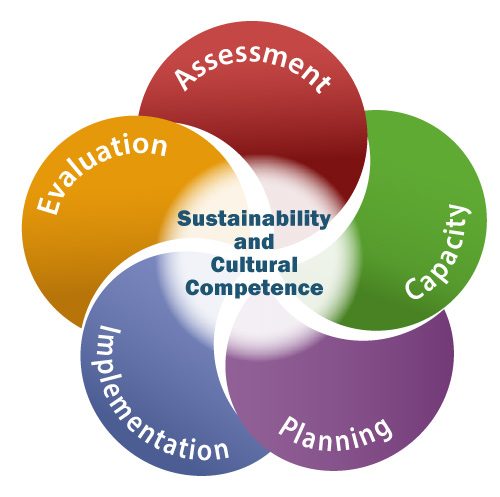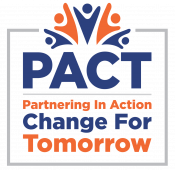Strategic Prevention Framework

Prevention begins when our communities’ health problems are understood within their environment; only then can we effectively plan and implement strategic action to reduce youth and young adult substance use. YESCCC’s PACT Project uses the Substance Abuse and Mental Health Services Administration’s (SAMHSA) Strategic Prevention Framework (SPF) to identify and select comprehensive, data-driven strategies to develop community solutions.
The SPF is a 5-step planning process that guides the selection, implementation and evaluation of effective, culturally appropriate and sustainable prevention activities. The SPF includes: Assessment: Identifies our local prevention needs based on data (What is the problem?); Capacity: Builds local resources and readiness to address our prevention needs (What and who do we have to work with?); Planning: Documents what works to address our prevention needs and how we can do it well (What should we do and how should we do it?); Implementation: Delivers evidence-based programs and practices as intended (How can we put our plan into action with positive outcomes?); and Evaluation: Examines the process we followed and outcomes of our programs and practices (Is our plan succeeding?).
The SPF is also guided by two cross-cutting principles that must be integrated into each and every step we take: Cultural competence: Our ability to understand and interact effectively with people who have different values, lifestyles and traditions based on their distinctive heritage and social relationships; and Sustainability: The process of building an adaptive and effective system that achieves and maintains desired long-term results. To learn more about the Strategic Prevention Framework, click here.
The Role of DATA in Prevention

PACT’s Year One/Two goal has focused on data assessment and collection. We utilize both quantitative and qualitative DATA collection to understand our communities local prevention needs and depend on the involvement of our community members and partners in all stages of this process. The information collected helps to target needs and develop our goals to reduce underage drinking and youth substance use.
QUANTITATIVE: Our PACT team works with the Nassau County Police Department and St. Joseph’s Hospital to understand the consequences of youth and young adult underage drinking and substance use. Police and hospital archival data (emergency room visits, arrests, DWIs, overdoses, etc.) is gathered annually to identify and prioritize the substance misuse consequence present within our communities. PACT works with our schools and colleges to assess youth and young adults risk and protective factors to clarify the impact these problems have on community members; identify the specific factors that contribute to these problems; assess readiness; and determine the resources required to address those factors. Ultimately, a thorough and inclusive assessment process helps to ensure our prevention efforts are appropriate and on target.
QUALITATIVE: PACT has worked with its Nassau County Coalitions (Farmingdale ADAPT, Massapequa Takes Action Coalition and Levittown Community Action Coalition) to learn more from community members and engage with partners in a meaningful way. Utilizing youth, parent and community focus groups and key informant interviews, we have developed further insight to understand the “why” behind youth, parent and community norms, attitudes and perceptions in Nassau County.

Environmental Strategies
PACT utilizes Environmental Strategies – evidence and research-based approaches to change the environment in which substance use occurs. We seek to change or influence the community conditions, standards, structures, systems and policies by which youth and young adult substance use exists. Changing community conditions ensures better outcomes to reduce underage and binge drinking as well as substance use. Individual-focused programs target individuals using substances reach limited numbers of people; community-based programs providing direct services to individuals can partner in a comprehensive community level response to substance use. Strategies that focus on the availability of substances and the entire community environment are likely to impact many more people.
In PACT’s environmental approach, place matters. PACT partners collaborate to modify or develop: local/state policies regarding youth access to alcohol and school policies to ensure youth and young adults make healthy decisions while also providing families and healthcare professionals treatment resources. PACT is also developing the skills of Nassau County’s prevention professionals in schools and colleges to address youth and young adult behaviors that may lead to the initiation of alcohol use or binge drinking. In addition, we partner with our community coalitions to ensure Nassau County businesses are educated in the safe and legal practices to serve and sell alcohol. PACT’s strategies ensure the availability of community/family prevention education and services while limited youth and young adults’ access to alcohol and substances in their communities.
